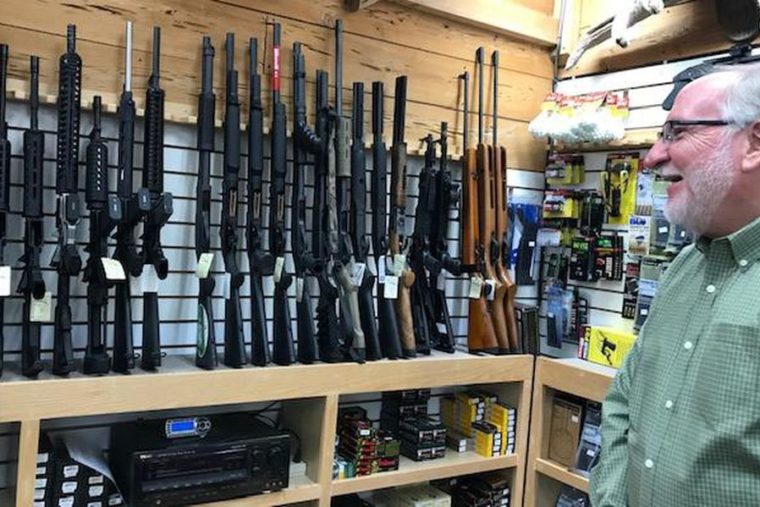Neil Schachte hands me the funniest little gun, a palm-sized snub-nosed weapon. I wrap my fingers around it, admiring the way my nails, painted gold for New Year’s, look next to the metal.
A knuckleduster could be held downward and used as a brass knuckle. Or it could be used to shoot someone. Sold for $15 back in the 1850s, it’s worth about $3,000 today.
Schachte, like his guns in his collection, is a survivor: Charleston-based Carolina Rod & Gun has been in business since 1979. That’s rare. There are more than 60,000 gun dealers in the United States, but it’s a brutal business in a highly politicized niche, with a declining customer base. Many dealers operate online, out of the backs of trucks or at gun shows. Schachte tells me a low-level gun dealer can bring in revenue in the hundreds of thousands a year.
He won’t share his revenue. But a substantial brick-and-mortar shop can have revenue easily in the millions, he says, even during what’s known as the Trump Slump in gun sales.
These days, with six full-time employees, Schachte has settled into a lucrative niche that he loves: appraising, buying and selling antique guns. It accounts for about 50% of his revenue, up from 10% when he started. The market for collectible guns is booming: A well-curated gun collection can return as much as 5-6% a year , as much as a conservatively managed 401(k).
He hands me a slim Remington derringer. “This one, a poker player might have held under the table, ready.”
by Elizabeth MacBride



